Birch leaf

Birch leaf
Willow leaf
Age: 50 million years
Period: Eocene
Location: Cache Creek Formation, British Columbia, Canada
Both of these tree species are often found today in the northern regions of North America and Canada. That these plants existed millions of years ago on the Earth and have never been through any evolutionary process is important evidence for the fact of Creation.
Like all other living things, these were created by God' s order "Be!" and have continued to exist with all the features they have today
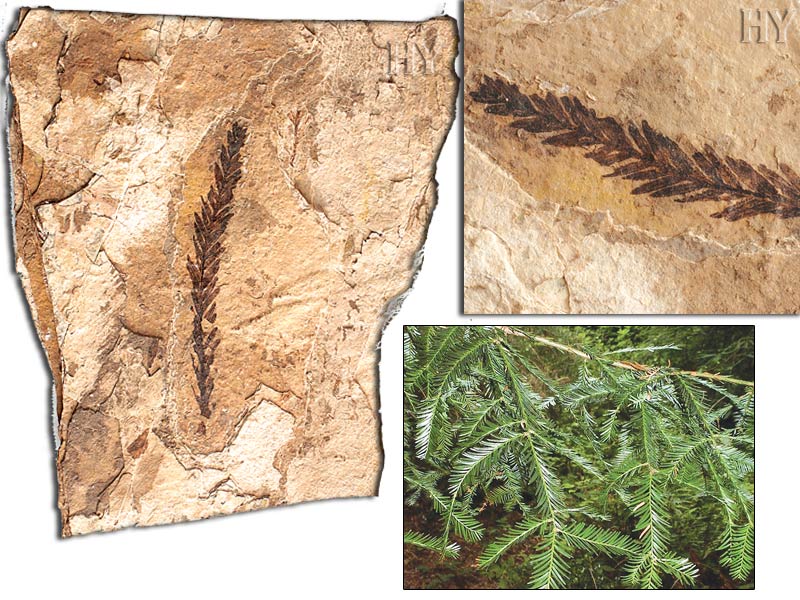
Age: 50 million years
Period: Eocene
Location: Cache Creek Formation, British Columbia, Canada
Countless remains of sequoia leaves that have survived as fossils prove that this plant has survived in different places on Earth and has never changed. Thanks to this important evidence, Darwinist speculations about the imaginary evolution of plants no longer exist. This 50-million-year-old sequoia leaf is one of the proofs that puts an end to these speculations.
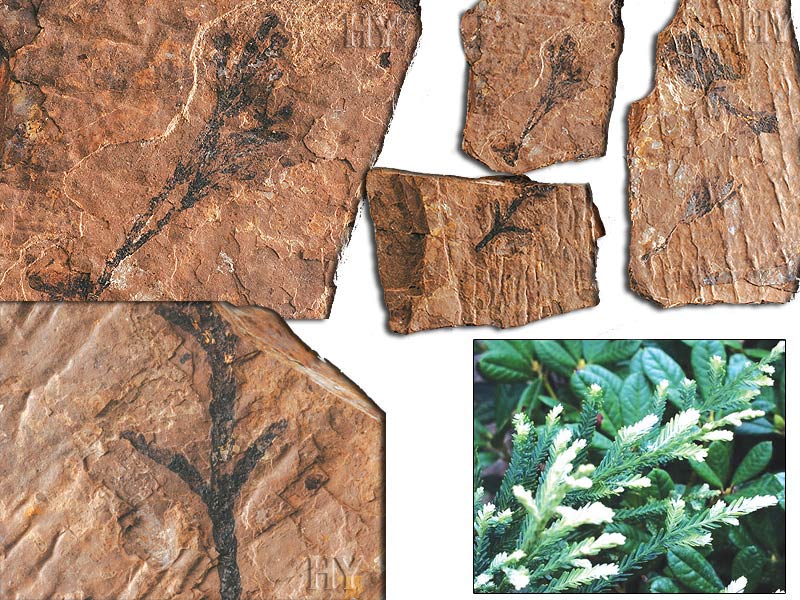
Age: 50 million years
Period: Eocene
Location: Cache Creek Formation, British Columbia, Canada
Leaves of this tree, reaching heights of hundreds of meters, are no different from the sequoia leaves of our own day. This proves that these giant trees also existed 50 million years ago and had the very same systems. Darwinists try to form imaginary scenarios regarding the gradual evolution of plants, but are not sure what to do in the face of paleontological evidence. This is an indication of the failure of the theory of evolution.

Age: 320 million years
Period: Carboniferous
Location: Lancashire, United Kingdom
The 320-million-year-old fern fossil pictured is important evidence that today's plants have not undergone any process of evolution, since this fossilized leaf shows that ferns have remained the same for hundreds of millions of years. In the face of this finding, the theory of evolution—claiming that living beings evolved from one another with minor changes over long periods of time—is disproved.
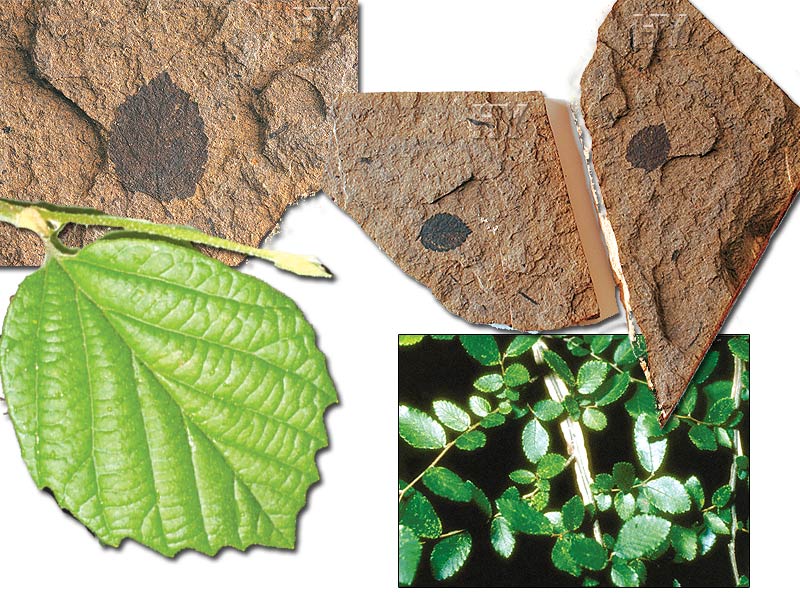
Age: 50 million years
Period: Eocene
Location: Cache Creek Formation, British Columbia, Canada
David B. Kitts, a science history professor from the Oklahoma University, expresses that fossil findings have never supported the theory of evolution:
Evolution requires intermediate forms between species and paleontology does not provide them. (David B. Kitts, " Paleontology and Evolutionary Theory," Evolution, Vol. 28, September 1974, p. 467.))
Whereas paleontology offers evolutionists no evidence, it displays that Creation is an undeniable fact. Innumerable fossils collected from every corner of the Earth reveal that living beings emerged suddenly, with their flawless and complete structures and have not changed since.

Ginkgo leaf
Alder leaf
Age: 54-37 million years
Period: Eocene
Location: Cache Creek Formation, British Columbia, Canada
These plants, which lived in the Eocene epoch, are among the countless findings that reveal that living beings have not evolved. Millions of fossils gathered for the past 150 years have ruined evolutionists' dreams. It is no longer possible for Darwinists to defend evolution based on the fossil record. This fact is also confessed by evolutionist paleontologist Mark Czarnecki:
A major problem in proving the theory has been the fossil record; the imprints of vanished species preserved in the Earth's geological formations. This record has never revealed traces of Darwin's hypothetical intermediate variants - instead species appear and disappear abruptly, and this anomaly has fueled the creationist argument that each species was created by God. (Mark Czarnecki, "The Revival of the Creationist Crusade," MacLean's, 19 January 1981, p. 56.)

Age: 320 million years
Period: Carboniferous
Location: Lancashire, United Kingdom
Like all other living beings, plants were also created. From the first moment they appeared, plants had all their mechanisms intact. Terms frequently used in evolutionist literature such as "development in time," "changes based on coincidences," "adaptations resulting from needs" are far removed from reality and are devoid of any scientific meaning. Fossil findings are one of the most important evidence for this.

This twig of thuja fossil in amber, dating back 45 million years, challenges evolutionist claims regarding the origins of plants.
Some of the plant fossils obtained belong to those fossilized in Baltic amber. Along with moss and moss-like plants, various flowers, fruits, seeds and leaves are preserved in Baltic amber, dating from the Eocene epoch (54 to 37 million years ago), helping botanists define more than 200 plant species.
 Cache Creek Formation, Canada One of the regions in Poland where Baltic amber is obtained |
The ongoing excavations of paleontologists have made Darwinists face one fact: Scientific findings deny the theory of evolution.
One of the regions where many various species of plant fossils have been obtained is the Cache Creek formation in Canada. This formation still bears traces of the surrounding mountains and the woods that existed in the region 50 million years ago. The rivers and winds carried leaves, flowers and some small living organisms to the lake and, sinking to the bottom there, they started to fossilize.
Two-thirds of the fossils obtained from the site so far belong to plants still alive today. Some, on the other hand, are the fossils of very rare plants that have not yet been identified. This site has a structure rich in silica, making it easier to obtain very well-preserved specimens. Their details make it possible to compare them comprehensively to those organisms' specimens living today—which comparison again shows that living things have been the same for tens of millions of years. In other words, they have not evolved.

Age: 50 million years
Period: Eocene
Location: Cache Creek Formation, British Columbia, Canada
Darwinists fail to explain the unchanging nature of the fossil record in the animal kingdom, as well as the invariability in the plant kingdom.
Along with thousands of animal specimens, the fossil record provides innumerable specimens of plants that have remained unchanged for millions, even hundreds of millions of years. One example is this 50-million-year-old cascara leaf from the Eocene epoch (54 to 37 million years ago). These specimens put a scientific end to Darwinism, which is entirely based on fraud.
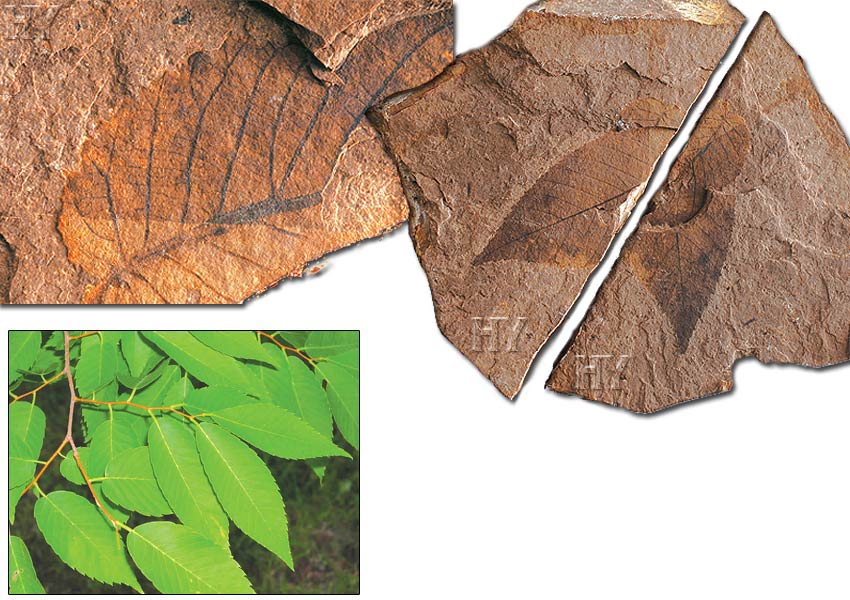
Age: 50 million years
Period: Eocene
Location: Cache Creek Formation, British Columbia, Canada
Since Darwin' s time, evolution' s advocates have been trying to find their imaginary "intermediate links." Darwin himself always hoped that they would be found one day. Because Darwinists tried to keep Darwin's legacy alive in their own way, they truly believed that fossils would eventually provide the evidence they expected. However, developments proved contrary to their expectations. The fossil record proclaimed that intermediate forms never existed on Earth, that living species never changed, and that they were created. One of the most important indications of that fact is this leaf from the Eocene epoch, 54 to 37 million years ago.
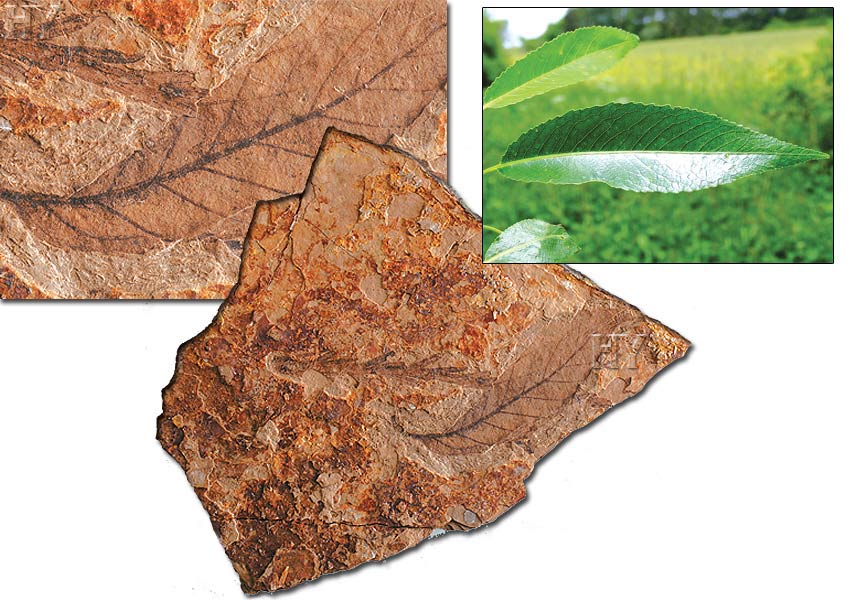
Age: 54-37 million years
Period: Eocene
Location: Cache Creek Formation, British Columbia, Canada
All fossils discovered throughout history prove the fact of Creation, but Darwinists continue to advocate otherwise. However, all scientific theories should be supported by scientific evidence. In the face of the unvarying fossil record and the countless living fossils that have appeared, all scenarios related to the theory of evolution have become void. Evolutionists do not have even a single shred of evidence to prove their theory.
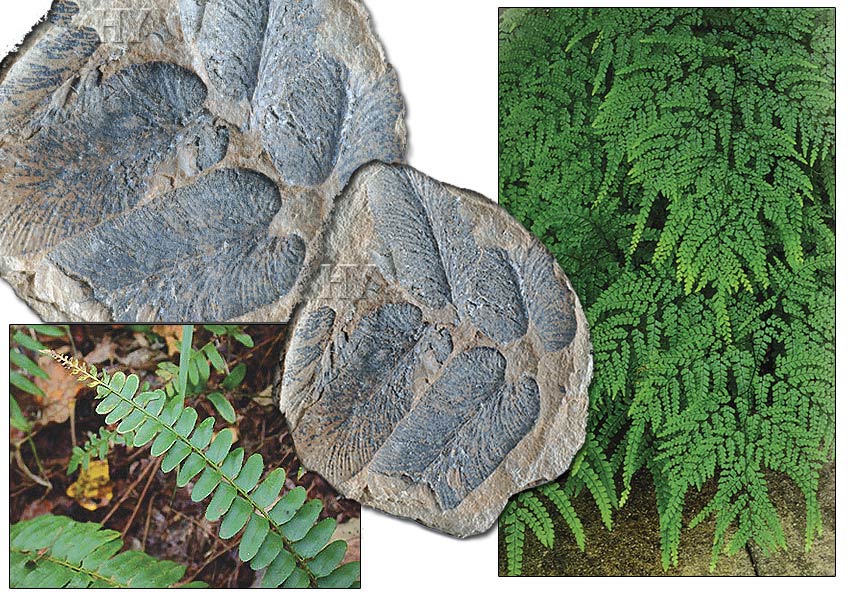
Age: 320 million years
Period: Carboniferous
Location: Lancashire, United Kingdom
As is true of all other species, plants appear in the fossil record all of a sudden. They have no common ancestor, as evolutionists claim. The fossil record also reveals no such transitions between different species of plants. This renders all claims of evolutionists invalid.
The 320-million-year-old fern fossil pictured is one example that invalidates the theory of evolution. Ferns that lived 320 million years ago and those of today are no different.
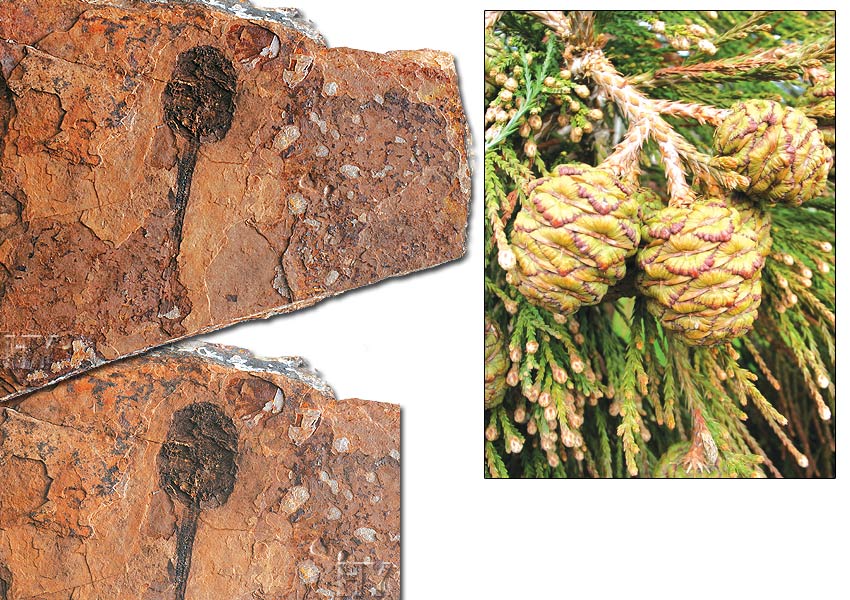
Age: 50 million years
Period: Eocene
Location: Cache Creek Formation, British Columbia, Canada
This 50-million-year-old redwood cone fossil clearly shows that redwoods remained the same for millions of years. This and other "living fossil" specimens openly proclaim that evolution never occurred. All Darwinist claims regarding evolution are void and are based on a great lie. Evolution is devoid of any evidence. Darwinists can offer no scientific evidence for the innumerable claims they have advanced. Living beings have not undergone evolution; God created them all.
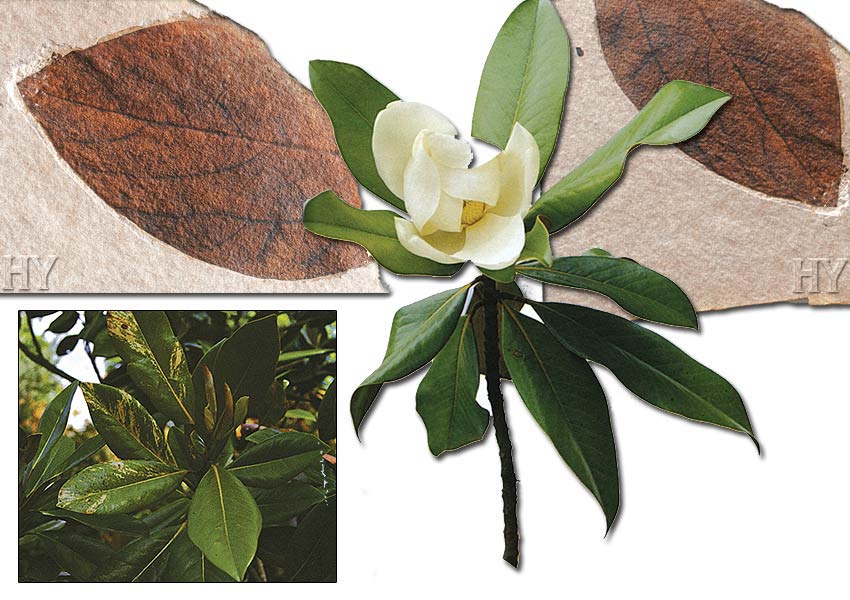
Age: 50 million years
Period: Eocene
Location: Cache Creek Formation, British Columbia, Canada
Fossil findings dramatize the invalidity of evolution, and some evolutionists do confess that their theory is not verified by the fossil record. One of these is Dr. David Raup, curator of geology at the Field Museum of Natural History in Chicago. He confesses that fossils do not support Darwinism:
. . . most people assume that fossils provide a very important part of the general argument in favour of Darwinian interpretations of the history of life. Unfortunately, this is not true. (David Raup, "Conflicts Between Darwin and Paleontology," Field Museum of Natural History Bulletin, Field Museum of Natural History: Chicago IL, January 1979, Vol. 50, No. 1, pp. 22-29.)
One of the findings proving the error of assuming fossils to be evidence for Darwinism is the 50-million-year-old magnolia leaf pictured.

Age: 50 million years
Period: Eocene
Location: Cache Creek Formation, British Columbia, Canada
This birch leaf from the Eocene epoch (54 to 37 million years ago) unearthed in British Columbia is identical to the birch leaves of our day. Birch trees have not changed for millions of years and have not gone through any process of evolution.
But thanks to Darwinists' misleading propaganda, some may be deceived into thinking that some fossil specimens belong to "intermediate forms"—a totally imaginary term. In the fossil record, there exists not a single transitional specimen claimed by evolutionists. The record reveals only fossil specimens that have remained unchanged for millions of years.

Age: 50 million years
Period: Eocene
Location: Cache Creek Formation, British Columbia, Canada
Darwinism tries to make people believe that coincidence, the false deity of evolution, has formed cells, organisms, animals, plants and even people. Darwinists suggest some irrational, even ridiculous claims that science cannot support and then seek some false evidence for them. That is why they seek imaginary intermediate forms in fossil beds. But as with this fossilized alder leaf from the Eocene epoch (54-37 million years ago), the geologic layers offer the remains of living things that have not changed—which is to say, have not evolved.
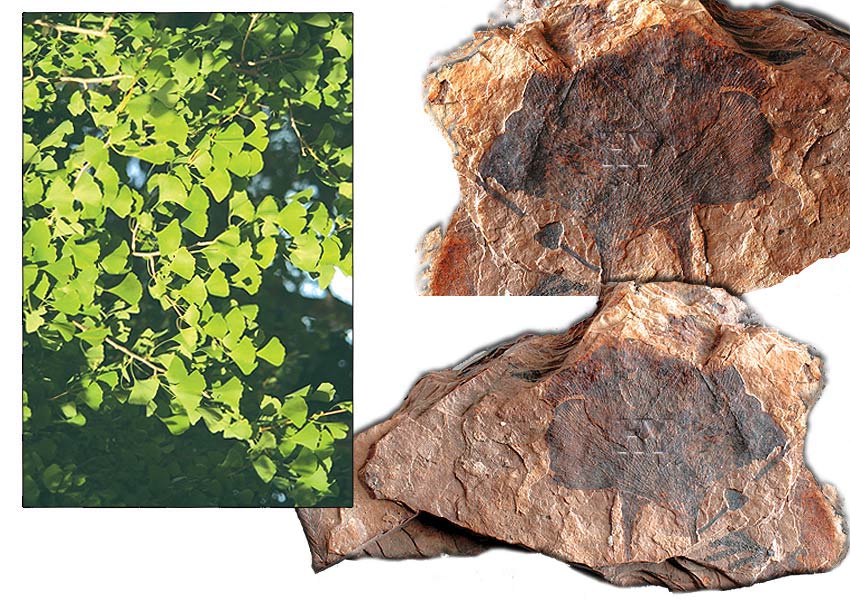
Age: 50 million years
Period: Eocene
Location: Cache Creek Formation, British Columbia, Canada
This ginkgo leaf from the Eocene epoch (54-37 million years ago) is no different from the ginkgo leaves of our day. According to Darwinist claims, within a period of 50 million years, this living species should have undergone evolution innumerable times, developing from a primitive to more advanced form. According to evolutionists, in Earth's so-called "primitive" environment of 50 million years ago, this species also had to display primitive features. However, the fossil record shows that ginkgos have not undergone any changes. This fossil alone, with the same complexity as modern-day ginkgos, proves that the evolutionary process is an imaginary concept.
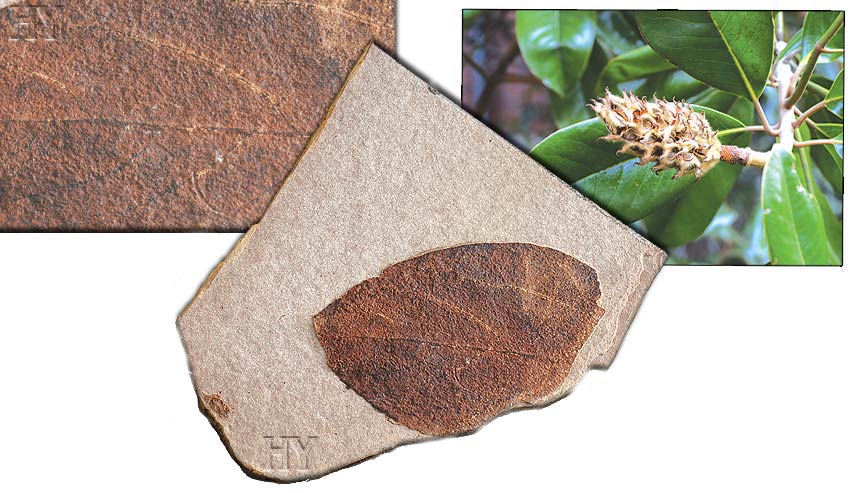
Age: 50 million years old
Period: Eocene
Location: Cache Creek Formation, British Columbia, Canada
The fossilized magnolia leaf pictured is 50 million years old. Despite this, the leaf is exactly the same as the ones living today. According to the theory of evolution, all those millions of years should have contributed changes to the organism. But such a change is observed in none of these fossil specimens. This 50-million-year-old magnolia leaf is one of the numerous pieces of evidence refuting evolution.
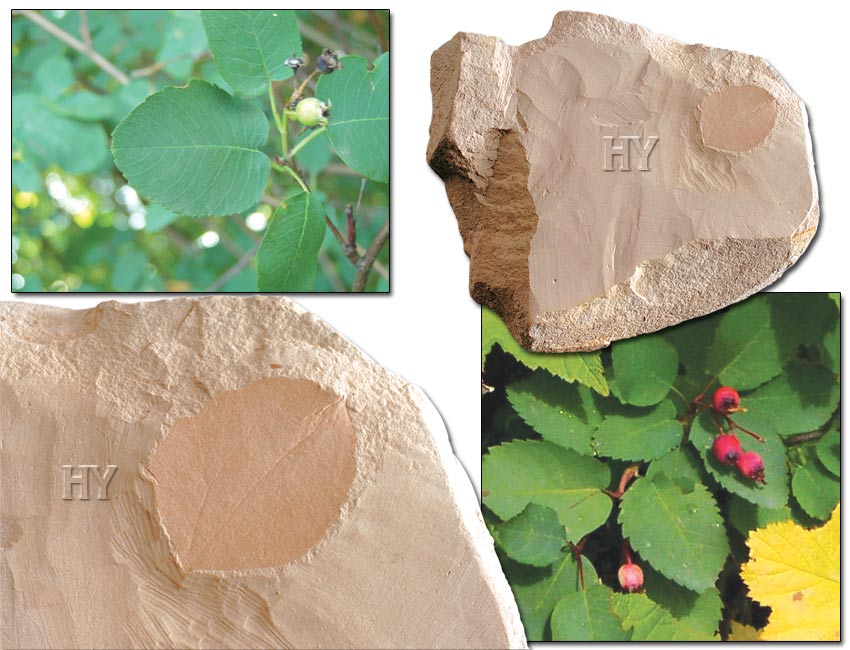
Age: 50 million years
Period: Eocene
Location: Cache Creek Formation, British Columbia, Canada
The fossil of this plant, which grows not very tall and is rich in leaves, is 50 million years old. This immaculate fossil specimen proves that the plant hasn't gone through any changes in millions of years as the evolutionists claim and has no "primitive" form.
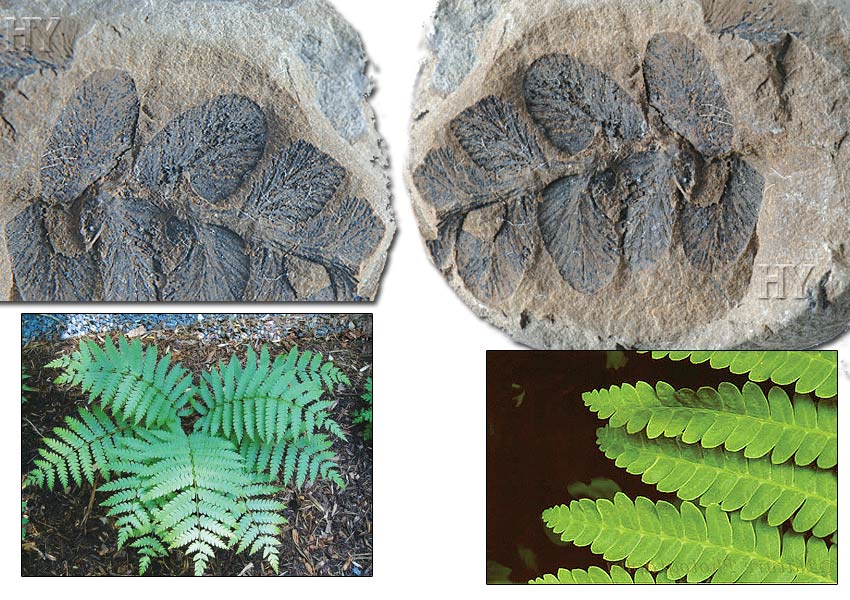
Age: 320 million years
Period: Carboniferous
Location: Lancashire, United Kingdom
One of the fossils revealing that ferns have always remained the same, and have not gone through any changes—that is, have not evolved—is illustrated here. This fossil shows that ferns that grew 320 million years ago were no different from the present-day examples. This devastates all the claims of evolutionists about the history of nature.
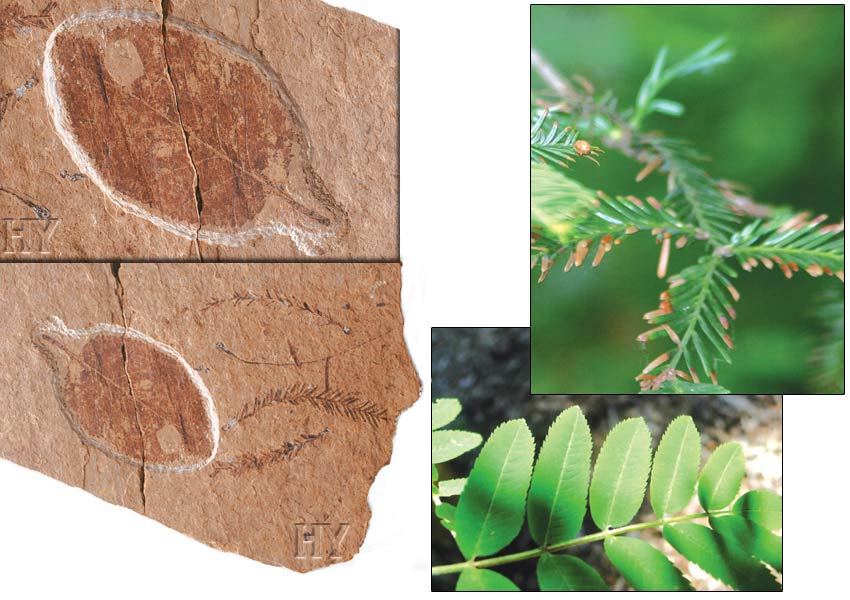
Ash leaf
Sequoia branch
Age: 50 million years
Period: Eocene
Location: Cache Creek Formation, British Columbia, Canada
The ash, inhabiting North America nowadays, is a medium to large tree. Also 50 million years ago, the ash tree and sequoia-a tree even larger than the ash tree-grew in Canada, with exactly the same characteristics.
The fossil record provides undeniable evidence proving this. The excellent petrified remains show all the identifying details.
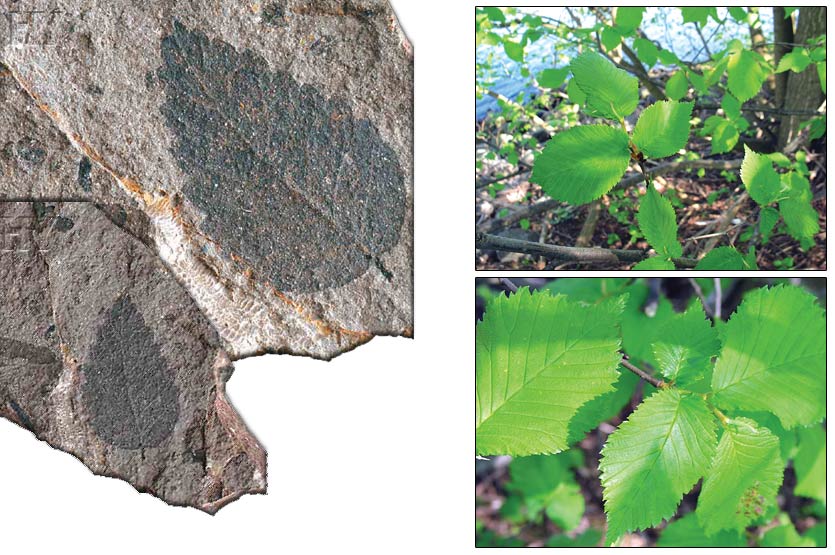
Age: 54-37 million years
Period: Eocene
Location: Cache Creek Formation, British Columbia, Canada
The elm leaf pictured grew during the Eocene epoch (54 to 37 million years ago), with the very same shape it has today. Like all other living fossils, this plant has not undergone any changes. This 50-million-year-old specimen clearly preserves all the details of the plant's leaf. In the face of evidence like this, evolutionists have no explanations or alternatives to offer.

Age: 58 million years
Period: Paleocene
Location: Sentinel Butte Formation, Central North Dakota, USA
The first person to admit that the scenario of plants' evolution was in a quagmire was Charles Darwin himself. As he wrote in an 1881 letter to botanist Sir Joseph Hooker of Kew Gardens:
Nothing is more extraordinary in the history of the vegetable kingdom [according to the scientific classification], as it seems to me, than the apparently very sudden and abrupt development of the higher plants.
These words are Darwin's admission that the plants' origins could not be explained by evolution and that—like all other living organisms, plants were also created by God.
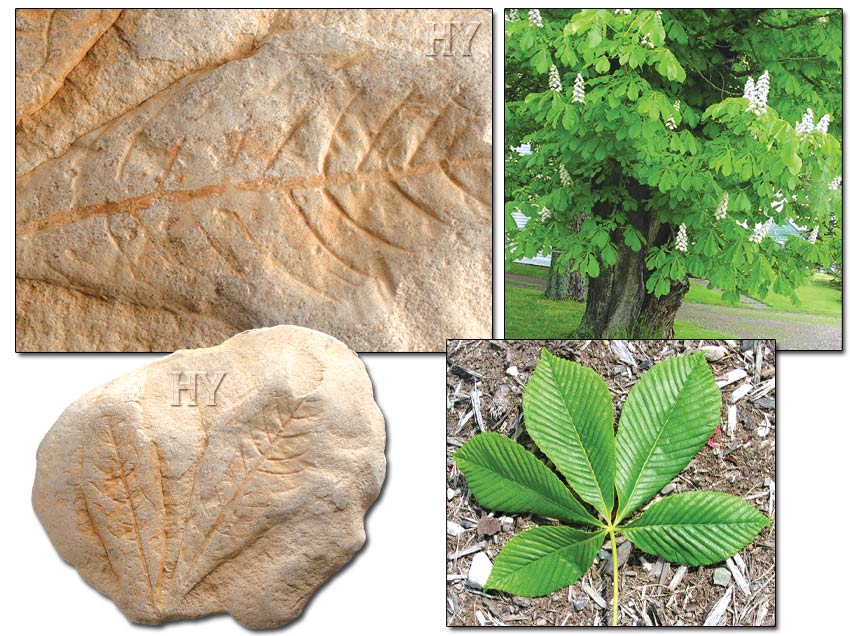
Age: 58 million years
Period: Paleocene
Location: Sentinel Butte Formation, Central North Dakota, USA
The fossil record is one of the main findings that devastate the theory of evolution—and the majority of scientists are aware of this. For example N. Eldredge and I. Tattersall make the following comment:
That individual kinds of fossils remain recognizably the same throughout the length of their occurrence in the fossil record had been known to paleontologists long before Darwin published his Origin. Darwin himself . . . prophesied that future generations of paleontologists would fill in these gaps by diligent search . . . One hundred and twenty years of paleontological research later, it has become abundantly clear that the fossil record will not confirm this part of Darwin's predictions [Emphasis added]. Nor is the problem a miserably poor record. The fossil record simply shows that this prediction is wrong. (N. Eldredge and I. Tattersall, The Myths of Human Evolution, New York: Columbia University Press, 1982, pp. 45-46.)
One of the fossils revealing that Darwin was wrong is this 58-million-year-old fossilized horsechestnut leaf.

Age: 54-37 million years
Period: Eocene
Location: Green River Formation, Uintah County, Utah, USA
Plant cells accomplish a process that no laboratory can: photosynthesis. In a plant's cell, organelles called chloroplasts absorb sunlight and use it in conjunction with water and carbon dioxide gas to produce starch.
This is the first link of the food chain and the food source for all living creatures on Earth. Details of this very complex process are still not exactly understood, and it is impossible for evolutionary mechanisms to explain this complexity.
The fossilized willow leaf pictured is 54 to 37 million years old. Willows that lived tens of millions of years ago employed photosynthesis in the same way that they do today. They reproduced in the same way and displayed the same features. This correspondence pushes evolutionists into a desperate situation and once again stresses the fact that living organisms are created by God.
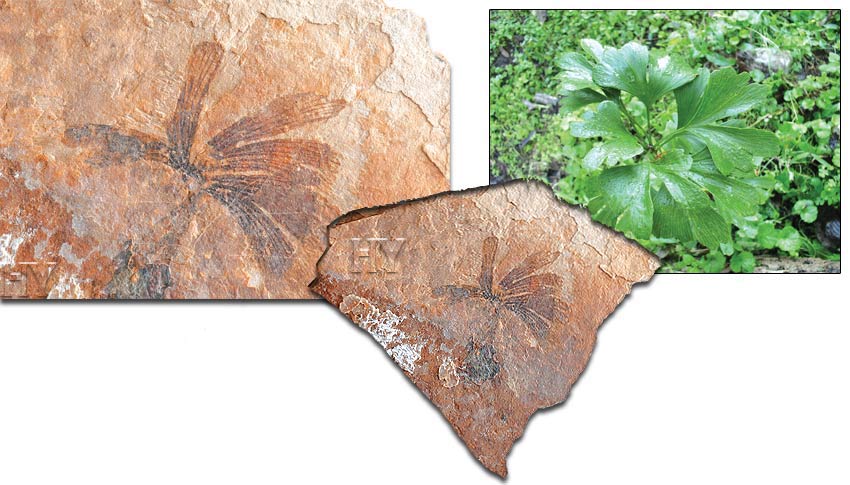
Age: 50 million years
Period: Eocene
Location: Cache Creek Formation, British Columbia, Canada
Darwin himself first discovered that ginkgo leaf, which has left abundant fossil remains in Earth's geologic layers, has never changed. But in contrast to Darwin's assumptions, the ginkgo is not the only living fossil that has survived to the present day.
The many living fossil specimens displayed in this book and thousands of others displayed in museums definitely refute Darwin.
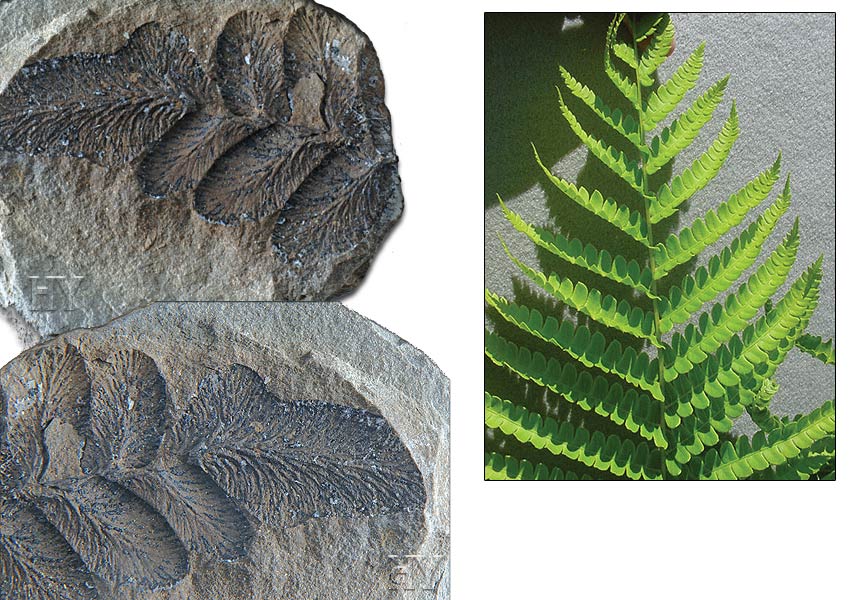
Age: 320 million years
Period: Carboniferous
Location: Lancashire, United Kingdom
By now, many plant fossils have been unearthed, and all of them have something in common: They are all flawless, and exactly like those plants alive in our day. Not a single fossil reveals that a particular plant is the forebear of any other, or that another species is an intermediate form. This is evidence that God created all living things.
The 320-million-year-old fern fossil pictured is one of the findings that shows the fact of Creation.
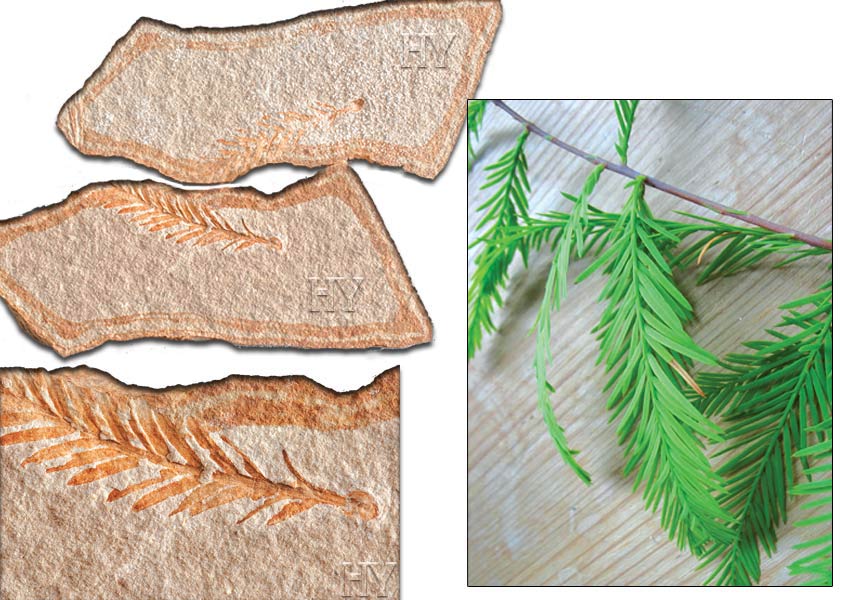
Age: 50 million years
Period: Eocene
Location: Cache Creek Formation, British Columbia, Canada
Metasequoia or "dawn redwood" is one of the largest, most upright and symmetrical trees of the world. This fossilized leaf has been preserved for 50 million years, verifying that the plant has never changed. If, 50 million years ago, a species possessed all the features it still has today, if it displays not a single trace of evolution, if none of its features show any characteristic of being an intermediate "missing link" fossil—and betray no inadequacy or "primitiveness," in the words of evolutionists—then they cannot say that this species has evolved. If a living species has not changed for millions of years and the Earth overflows with the evidence, then it is not possible to talk about evolution.
This fossil is a two-sided one. The plant has left its imprint on both surfaces of the layered stone.